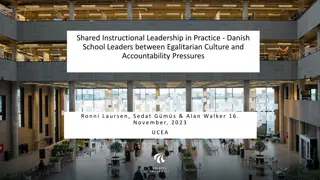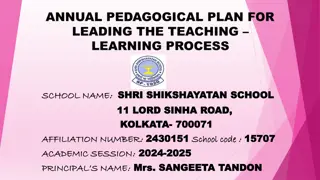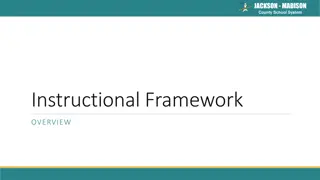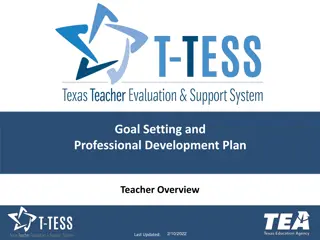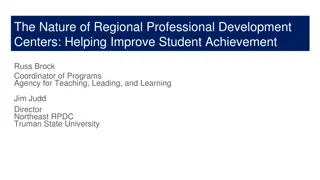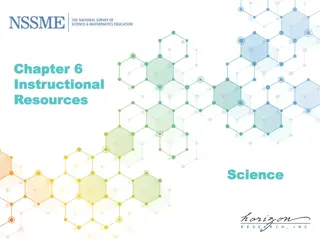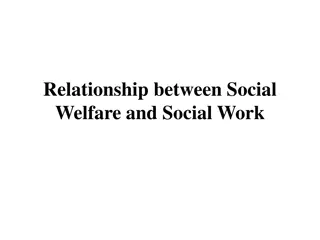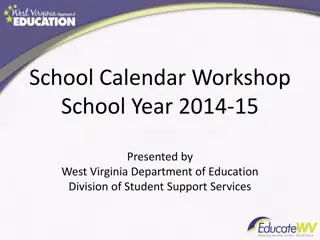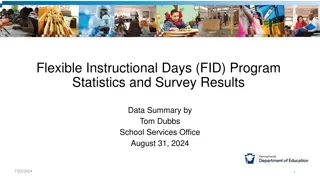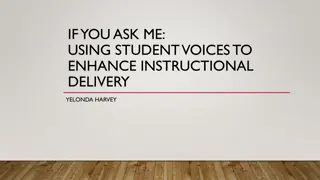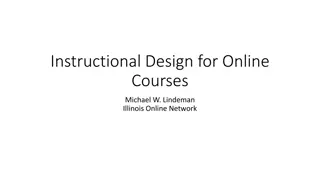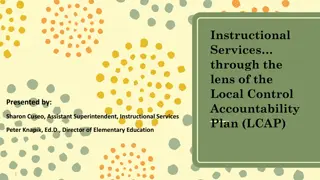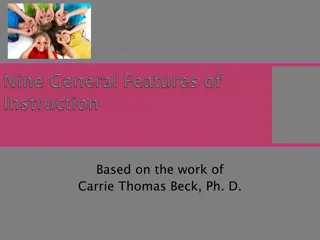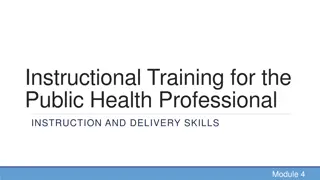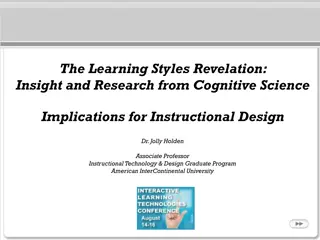Exploring Social Studies Instructional Practices: Professional Development Series
Join the DESE Social Studies Professional Development Series to delve into instructional practices in social studies. Connect with educators, explore pedagogy, and engage in hands-on activities like the Elephant and Giraffe exercise. Learn from ELA directors, Missouri Writing Project experts, and Arts Education directors on integrating arts and history. Embrace learning through feedback, practice, and collaboration. Enhance your social studies teaching skills in a supportive environment.
Download Presentation

Please find below an Image/Link to download the presentation.
The content on the website is provided AS IS for your information and personal use only. It may not be sold, licensed, or shared on other websites without obtaining consent from the author. Download presentation by click this link. If you encounter any issues during the download, it is possible that the publisher has removed the file from their server.
E N D
Presentation Transcript
DESE Social Studies Professional Development Series { Exploring Instructional Practices in Social Studies July 26, 2016
Introductions: Making Connections Be ready to share your chain once your small group introductions are completed.
Social Studies Professional Development Series: Day 2 Introductions Social Studies: Giraffes and Elephants Social Studies: Questions and Answers Break Debbie Jameson, ELA Director, and Lisa Scroggs, ELA Assistant Director Nick Kremer, Missouri Writing Project Reading and Writing through History: World War II and the Bomb Working Lunch Tom Tobias, Arts Education Director-- Defining Arts Integration: Reading SS Pedagogy Portraits as Biography
The Elephant and the Giraffe Giraffe Bend over, hands clasped in front of you Elephant Stand straight, hands clasped above head Alone Group together with other people Group Move away from others Sit Stand up where you are: Small jump in place Stand Sit where you are Against wall Move to center area Center of area Move near a wall
There once was an elephant who had a giraffe as his best friend. Often the elephant would lean against a wall alone and sit, waiting for the giraffe. The elephant s friend liked to go to the center of an area of grass and stand with the giraffes. Meanwhile, the patient elephant would lean against the wall and sit until the giraffe left the center of the area of grass to come over and lean against the wall to stand by his friend.
{ { Stretching social studies pedagogy Learning something new Scary at first, but got easier with each successive effort Scary at first, but got easier with each successive effort Didn t get better until I tried it (couldn t just observe) Didn t get better until I tried it (couldn t just observe) Different people mastered at a different pace, but with time and practice everyone could master Different people embraced at a different pace, but with time and practice everyone embraced Needed multiple opportunities to practice Needed multiple opportunities to practice Used examples from peers with each try to get better Received feedback with each try to get better Received feedback from teachers with each try to get better Used examples from peers with each try to get better
1 2 3 4 4 3 2 1 4 3 2 1 1 2 3 4 1 2 3 4 1 2 3 4 4 3 2 1 4 3 2 1 Social Studies: Questions and Answers Aaronson Model Activity
Social Studies and ELA: Challenges and Opportunities Debbie Jameson, ELA Director Lisa Scroggs, ELA Assistant Director Nick Kremer, Missouri Writing Project
Working Lunch: Talk with someone you did not know until today, about how you might use Giraffe and Elephant or Aaronson model in your classroom or work.
Defining Arts Integration: Reading Portraits as Biography Tom Tobias, Arts Education Director, DESE Do I have to be creative?
THE VOICE YOU HEAR WHEN YOU READ SILENTLY is not silent, it is a speaking- out-loud voice in your head: it is spoken, a voice is saying it as you read. It's the writer's words, of course, in a literary sense his or her "voice" but the sound of that voice is the sound of *your* voice. Not the sound your friends know or the sound of a tape played back but your voice caught in the dark cathedral of your skull, your voice heard by an internal ear informed by internal abstracts and what you know by feeling, having felt. It is your voice saying, for example, the word "barn" that the writer wrote but the "barn" you say is a barn you know or knew. The voice in your head, speaking as you read, never says anything neutrally- some people hated the barn they knew, some people love the barn they know so you hear the word loaded and a sensory constellation is lit: horse-gnawed stalls, hayloft, black heat tape wrapping a water pipe, a slippery spilled *chirr* of oats from a split sack, the bony, filthy haunches of cows... And "barn" is only a noun- no verb or subject has entered into the sentence yet! the voice you hear when you read to yourself is the clearest voice: you speak it speaking to you. - -----Thomas Lux, The New Yorker, July 14, 1997
Think, Pair, Share What essential idea might you use this poem to teach? 1. How might you use this poem as the basis of an anchor experience? (memorable, relevant, applicable) 2.
Contact me with questions or ideas any time: Dixie.Grupe@dese.mo.gov Share the ideas you ve gathered today with your peers Check the Social Studies DESE page for new information and opportunities Send me your email to add to our informal Wiggio group. The Department of Elementary and Secondary Education does not discriminate on the basis of race, color, religion, gender, gender identity, sexual orientation, national origin, age, veteran status, mental or physical disability, or any other basis prohibited by statute in its programs and activities. Inquiries related to department programs and to the location of services, activities, and facilities that are accessible by persons with disabilities may be directed to the Jefferson State Office Building, Director of Civil Rights Compliance and MOA Coordinator (Title VI/Title VII/Title IX/504/ADA/ADAAA/Age Act/GINA/USDA Title VI), 5th Floor, 205 Jefferson Street, P.O. Box 480, Jefferson City, MO 65102-0480; telephone number 573-526-4757 or TTY 800-735- 2966; email civilrights@dese.mo.gov










